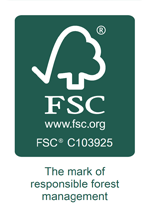If you’re printing a perfect bound booklet, you need to make it look as good on the inside as it does on the outside. Perfect binding is most commonly used by businesses and organizations looking to produce professional products that they can trust will last for years.
The Importance of Aesthetics in Your Printed Materials
- Aesthetics: You want your printed materials to look good. This means both the outside and inside of your booklet need to be designed well.
- Branding: Good design makes a statement about your brand, whether it’s through color or typography choices, or even just by using an aesthetically pleasing layout that fits with what you are trying to convey.
- Reader Experience: Design affects the reader’s experience in a very real way. An aesthetically unpleasing book may cause them not to finish reading it because they don’t want to look at it anymore! They might also skip over important information if they find the design distracting or cluttered as well.
- Customer Experience: For businesses who sell products or services directly through their printed materials (i.e., ad brochures), good design can make all the difference between converting more customers and losing out on sales due to lack of interest in the product/service being offered by the business itself.”
How to create a professional looking perfect bound booklet
- Use a good-quality paper.
- Use a good-quality printer.
- Use a good-quality binding machine and glue.
- Use a good-quality hole punch (and hole punch machine if you want to make your own).
Paper and Finish Effects
Paper weight, thickness and texture:
There are three main paper weights, each with its own characteristics. They are:
- 60# or 60 GSM (grams per square meter) – This is a thick, high quality paper that has a shiny, smooth finish. It’s also very durable.
- 70# or 70 GSM – This is an even thicker and more durable option than the 60# weight, but still has a smooth finish. The feel of this stock will be more like a fine art print than an offset printed book.
- 80# or 80 GSM – A thick stock with great durability that can withstand folding without cracking or tearing through multiple uses over time. The surface has a slight texture to it which makes it easy to write on with markers without leaving unsightly smears behind like glossy papers do sometimes when they’re handled frequently throughout their lifespans as well as being easier for younger children who may struggle with writing on slippery surfaces due to lack of grip from sweaty hands! Finish effects: Glossy/Smooth – High gloss finish gives your project an expensive look while providing excellent UV protection against fading over time; Matte/Textured – Perfect for projects where you want something less formal but still professional looking such as presentations where only cost effectiveness matters most! Coated vs Uncoated Papers: Coated papers have been coated by applying one or more layers of varnish over them which helps prevent smudging from ink pens when used within certain ranges (usually around 5mm) while uncoated ones don’t have any protective coating on them at all so there’s no risk whatsoever when using either type!”
Printing Quality
The quality of the printing is an important factor to consider when choosing a book binder.
- High quality printing
- Printing on both sides (duplex)
- Printing on front and back covers (case binding)
- Printing on spine of booklets (spine binding)
- Printing inside pages of finished booklet(s).
Design of the Pieces
Design – The design of your piece is important, and you should use a professional designer. You should include a cover that is intriguing to the reader, and have a font that is easy to read. A table of contents is an important feature in your booklet because it helps the reader find what they are looking for quickly.
If you’re printing a perfect bound booklet, you need to make it look as good on the inside as it does on the outside.
If you’re printing a perfect bound booklet, you need to make it look as good on the inside as it does on the outside. You can do this by taking advantage of all the space inside of your booklet. Make sure that your pages are printed in the correct order and use a good quality paper with a good binding. It’s also important to make sure that your booklet is the right size for its purpose.
As you can see, there are many factors that contribute to the final quality of your perfect bound booklet. So if you want to print them yourself, you need to take into account all these points before sending them off to be printed. If not, it may seem like a good idea at first but then end up costing more money than they are worth in the end!


